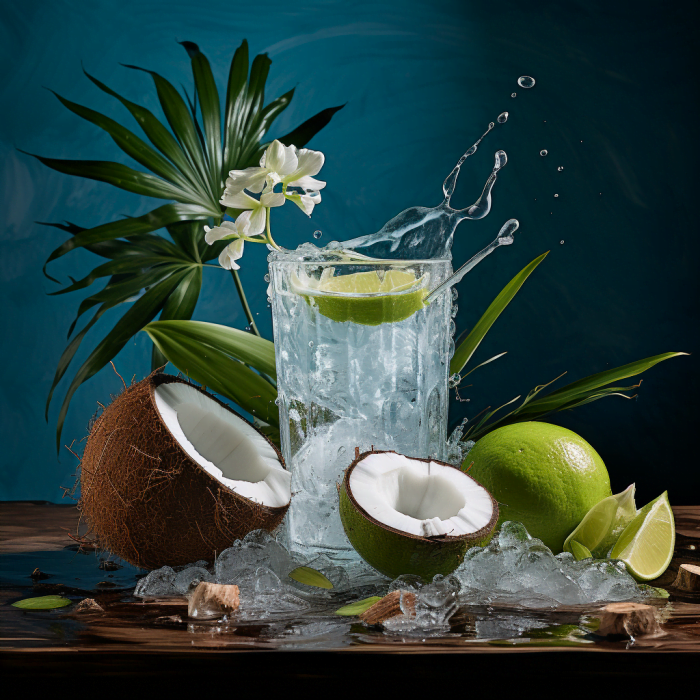Many people enjoy the crisp, lemon-lime taste of Sprite, but some question if this popular soda is actually bad for your health.
With conflicting information online, it can be confusing to determine how Sprite may impact your body.
In this article, we’ll analyze the ingredients in Sprite and research both sides of the debate on whether Sprite causes health issues like weight gain, tooth decay, and bone deterioration.
We’ll also compare how Sprite stacks up to other sodas in terms of sugar content.
By the end, you’ll understand the key facts about drinking Sprite and be able to make an informed decision about whether it belongs in a balanced diet.
Getting the full story will help you enjoy Sprite guilt-free or motivate you to kick the can.
Understanding both the risks and facts behind any food or drink leads to better choices.
Introduction to Sprite and Its Popularity
With its crisp, lemon-lime taste, Sprite has become one of the most popular carbonated soft drinks in the world.
As a caffeine-free soda, Sprite offers a refreshing flavor profile that people have come to love since its release in 1961.
Unlike colas which can have an overpowering taste, Sprite provides a lighter alternative with a clean citrus flavor from lemon and lime extracts.
As a product of the Coca-Cola company, Sprite benefits from Coke’s global distribution network and marketing efforts.
Today, Sprite ranks as the third best-selling soft drink worldwide behind only Coca-Cola and Pepsi, available in over 190 countries.
In the United States, Sprite competes closely with 7UP as the leading lemon-lime soda, capturing a loyal following amongst teens and young adults seeking an alternative to heavier carbonated beverages.
Understanding Sprite’s Ingredients
![]()
Like most sodas, the foundation of Sprite begins with carbonated water and sweeteners.
Carbonated water results when carbon dioxide is dissolved into purified water under pressure.
The bubbly sensation can be enjoyable and even aid digestion.
Sweeteners like high fructose corn syrup give Sprite its signature sweet/tart balance.
- High fructose corn syrup (HFCS) – Sprite’s primary sweetener made from cornstarch. Contains no artificial ingredients despite some claims. Provides sweetness with no unique health consequences compared to other added sugars. HFCS makes up Sprite’s largest source of calories and carbohydrates (46 grams per 20 oz bottle).
- Citric acid – Adds tartness similar to real citrus fruits while preserving and stabilizing.
- Sodium citrate – Regulates acidity as a buffering agent.
- Natural lemon and lime flavors – Provide authentic flavors.
- Artificial lemon lime flavors – Supplement natural flavors for consistency.
HFCS has been controversial because of its high fructose content compared to regular sugar (sucrose). Some research links excess fructose to health issues like fatty liver disease. However, HFCS only contains 3-5% more fructose than sucrose and does not differ much metabolically. Both contain similar ratios of glucose and fructose. Still, many health-conscious consumers prefer to limit intake of all added sweeteners, including both HFCS and sucrose.
Finally, preservatives like sodium benzoate prevent the growth of bacteria and fungi to prolong shelf life.
Sodium benzoate has come under fire for potential to form small amounts of benzene, a carcinogen, in the presence of vitamin C. However, the same issue applies to its common preservative alternative, potassium sorbate. When used responsibly within FDA limits, neither produce dangerous benzene levels. But some consumers opt for preservative-free beverages to avoid this controversy altogether.
Potassium sorbate serves the same antimicrobial function.
Health Concerns Linked to Sprite Consumption
Weight Gain and Obesity Risks
Like regular soda consumption, drinking Sprite may contribute to weight gain and higher obesity risk over time due to its high sugar content.
Each 12-ounce can contains 140 calories and 38 grams of sugar.
The extra calories can easily add body fat without providing nutritional benefits or making you feel full.
Overconsuming sugary drinks is associated with increased BMI and obesity prevalence.
Increased Risk of Diabetes and Heart Disease
Frequent Sprite intake may raise risks for diabetes and heart disease as well since excess sugar gets stored as fat or converted to triglycerides.
Both diabetes and cardiovascular disease have established links to added sugar intake.
Still, Sprite’s precise role remains unclear since overall diet matters more. Those who consume a generally healthy diet and remain active may offset Sprite’s sugar content with no heightened disease risk.
Dental Health Risks: Tooth Decay and Erosion
Acidic sodas like Sprite can erode tooth enamel over time, leading to decay or sensitivity.
The citric and phosphoric acids give Sprite a pH around 3, making it quite acidic.
Prolonged exposure from sipping slowly or swishing around the mouth intensifies erosion effects.
However, proper dental hygiene and limiting contact time can mitigate risks substantially. Simply rinsing with water after drinking helps neutralize acid.
Potential for Gout and Other Chronic Diseases
Research on soda’s role in gout and conditions like kidney stones remain inconsistent, with both showing only a weak correlation to Sprite and soda intake.
Likely, those predisposed see soda as an aggravating factor, but soda alone does not cause such issues in most healthy people.
As with all diet factors, genetic and lifestyle variables contribute more to one’s disease vulnerability.
The Debate Over Sodium Benzoate
Sodium benzoate, used in Sprite for freshness, has come under scrutiny for potential health impacts.
When combined with vitamin C, sodium benzoate forms trace amounts of benzene, a known carcinogen. However, benzene forms in many foods and manufacturing processes exposed to heat or sunlight.
The FDA deems sodium benzoate safe at permitted levels in beverages, as benzene exposure remains thousands of times below dangerous concentrations.
Debunking Myths: Caffeine and Hydration
Is There Caffeine in Sprite?
Unlike many sodas, Sprite contains zero caffeine per serving. Coca-Cola originally designed Sprite to provide a crisp, refreshing flavor profile without the stimulating effects of caffeine found in colas.
The lack of caffeine classifies Sprite as one of the few mainstream caffeinated-free soda options on the market.
For those avoiding caffeine due to pregnancy, medications, or personal preference, Sprite can fulfill one’s soda cravings without intake concerns over stimulant content.
Can Sprite Hydrate You?
Despite Sprite’s reputation for refreshment, it cannot effectively hydrate the body and poses dehydration risks with overconsumption due to its high sugar concentration.
The carbonation produces a satisfying mouthfeel, but slows fluid absorption compared to still water.
More importantly, the 38 grams of sugar in a 12 oz can require significant water to metabolize and excrete from the body.
As little as 2% dehydration harms physical and cognitive performance.
For most people in temperate conditions, Sprite can accompany but not replace proper hydration habits.
Who Should Avoid Sprite?
While Sprite can be enjoyed in moderation by most healthy individuals, certain groups should exercise caution or avoid drinking it regularly due to health considerations:
Those with diabetes or pre-diabetes:
- High sugar load spikes blood glucose levels
- Can worsen insulin sensitivity over time
People at risk for heart disease:
- Added sugars tied to poor lipid profiles
- Increases blood pressure and inflammation
Individuals managing their weight:
- 140+ empty calories per can slow weight loss progress
- Increased risk for fat accumulation around organs
People prone to gout attacks:
- Fructose exacerbates purine metabolism
- Correlates with elevated uric acid
Anyone monitoring sodium intake:
- 70mg sodium per serving
- Risk of total excess for salt-sensitive groups
Those with chronic kidney disease:
- Phosphoric acid forces kidneys to work harder
- Can accelerate renal function decline
Healthier Alternatives to Sprite
While an occasional Sprite won’t undermine an otherwise balanced diet, those looking to limit sugar or soda intake have many flavorful options to swap in:
Water
![]()
Plain, cool water remains the gold standard for hydration and health. Staying properly hydrated without excess sugars or additives is key before considering other beverages. People often underestimate how refreshing simple water can taste. Customizing with fresh lemon, lime or other fruit slices or herbs as desired adds zing. Cool, crisp water is the ultimate healthy foundation to build on with other drinks.
Sparkling Water with Fruit Juice

Natural flavored seltzers add taste without extra sweeteners. For those wanting some sweetness, lightly sweeten sparkling water with small amounts of 100% fruit juice instead of sugary syrups. Great juice options to mix in include lemon, lime, orange or mixed berries. This creates a flavorful soda alternative without excess sugar or additives.
Herbal & Fruit Infused Teas

Chilled hibiscus and passionfruit teas offer refreshing zing without excess sweetness. Blending in squeezed juices or frozen fruits adds light, natural sweetness. These fruit-infused teas hydrate while providing antioxidants, and allow for customization to suit any taste.
Kombucha Tea Drinks

As fermented tea, kombucha contains probiotics that support gut health and immunity. The natural effervescence and tart cherry or ginger flavors provide Sprite-like refreshment. Kombucha hydrates while the probiotics boost wellness, making it a functional soda alternative. Contains trace alcohol from fermentation (~0.5%), not suitable for some groups like children or those avoiding alcohol
Coconut Water

Coconut water’s natural electrolytes hydrate better than soda. With subtle sweetness and fewer calories than juice, it contains minerals that aid hydration. The electrolyte profile offers an ideal soda substitute to replenish the body.
Conclusion: Balancing Enjoyment with Health
So is Sprite truly bad for you after all?
The evidence suggests that in moderate amounts, Sprite likely poses few unique or serious risks compared to other sugary sodas.
However, excessive intake – especially long-term – associates with weight issues, blood sugar spikes and tooth decay.
While Sprite passes safety testing for its ingredients like citric acid and sodium benzoate, some special sensitivity among certain groups cannot be ruled out.
As with any food or drink when consumed in moderation, Sprite remains an enjoyable beverage for most people.
Health need not be sacrificed for refreshment.



